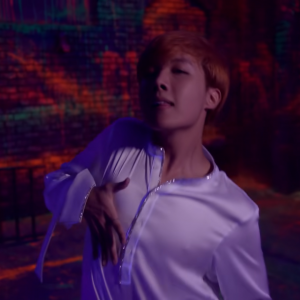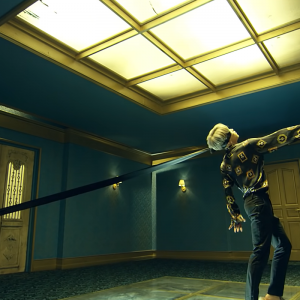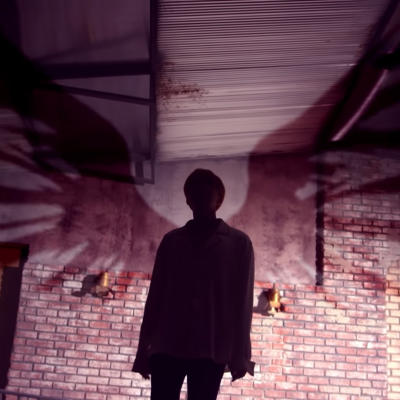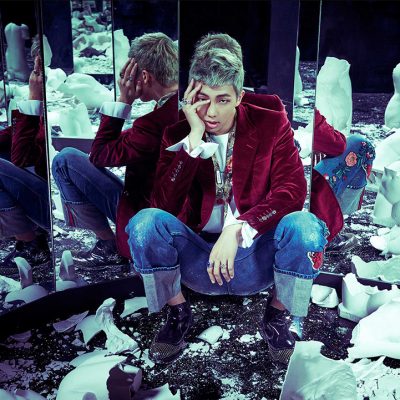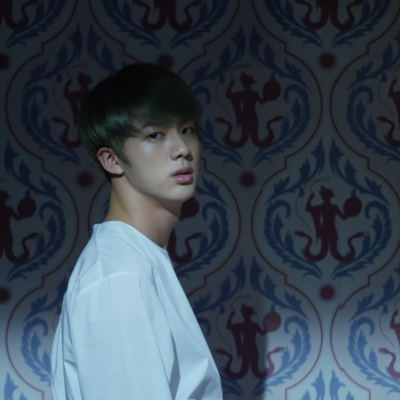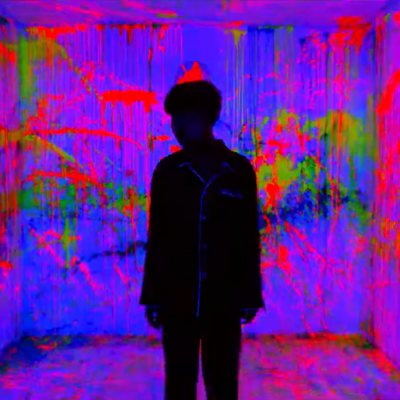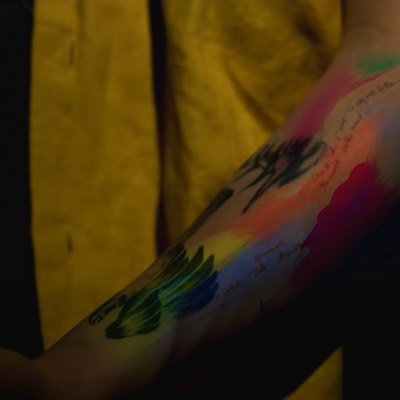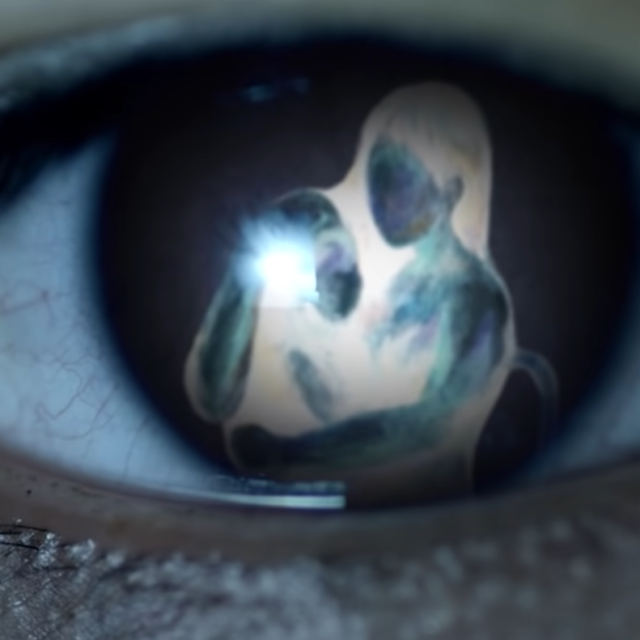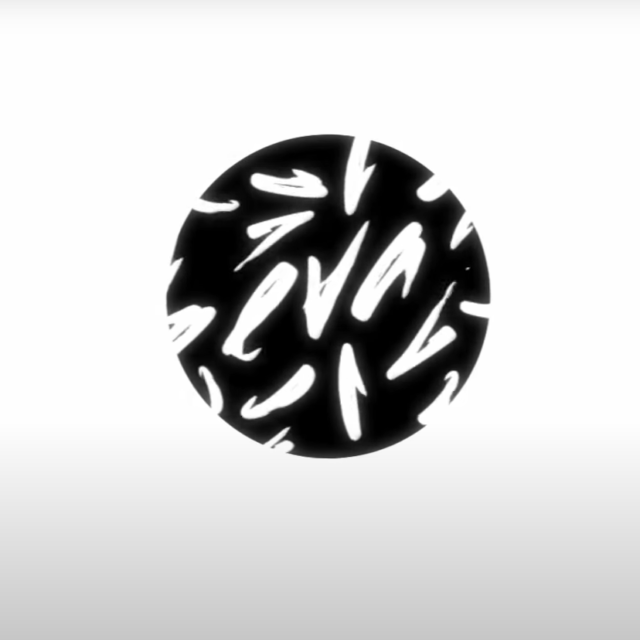WINGS:
more than a concept album
Before analysing my chosen extract and its peculiar storytelling I will give some context to better understand how #1 BEGIN relates to the band BTS.
After briefly introducing the band and its discography, I will talk about the concept album and I will present the first two narrative layers.
The third one will be addressed in the next chapter.
At the bottom, the appendix of this chapter can be found.

Who are BTS
BTS (방탄소년단) is a k-pop idol group with seven members (born in between 1992 and 1997), three rappers – RM (Kim Namjoon), SUGA (Min Yoongi) and j-hope (Jung Hoseok) – and four vocalists – Jin (Kim Seokjin), Jimin (Park Jimin), V (Kim Taehyung) and Jungkook (Jeon Jungkook). After their training period, they debuted in 2013 under Big Hit Entertainment, which was less influential and far smaller than the “big 3” entertainment companies of Korea (SM, YG, and JYP). Seven years later they achieved success in Korea but also all over the world.
First debuting as a hip hop group, over the years they evolved their musical style and explored different genres. Like many other k-pop groups, their discography is divided in eras, each one characterized by different visuals and core themes in their works (which could be studio albums, extended plays or compilation albums).
The group’s Korean name, 방탄소년단, is translated into Bulletproof Boy Scouts, which lead to the English acronym BTS. The name originally aimed to define them as the young generation’s spokespersons, protecting the youth from prejudice and oppression. As a result, their lyrics talk about what young generations (including themselves) go through while becoming adults. (Lee, 2019). They are the portrait of the growing youth. After the rebranding in 2017, BTS stands even for ‘Beyond The Scene’, which means “growing youth ‘BTS’ who is going beyond the realities they are facing and going forward” (PlusX, 2017).
AN INTERTEXTUAL DISCOGRAPHY
In this essay, WINGS (2016) will be considered as a moment in the narrative continuum of BTS’ discography.
This era stands in between the HYYH era (from the initials of the Korean pronunciation of Chinese characters 花樣年華, which translates into ‘The Most Beautiful Moment in Life’), characterized by both joy and traumas, and the Love Yourself era, the starting point of healing from the past.
Therefore, WINGS is the era of adolescence, where the boys have to face temptations and question themselves to become adults.
Korean studio albums, compilations and extended plays (Japanese releases, mixtape or singles are excluded) divided by eras.
At the bottom, the main theme of each of them.

WINGS:
album cover and tracklist

1. Intro : Boy Meets Evil 2’02”
2. Blood Sweat & Tears 3’33”
3. Begin 3’37” (Jungkook’s solo)
4. Lie 3’37” (Jimin’s solo)
5. Stigma 3’39” (V’s solo)
6. First Love 3’04” (Suga’s solo)
7. Reflection 3’56” (RM’s solo)
8. MAMA 3’35” (j-hope’s solo)
9. Awake 3’35” (Jin’s solo)
10. Lost 4’01”
11. BTS Cypher 4 4’52”
12. Am I Wrong 3’33”
13. 21st Century Girl 3’15”
14. 2! 3! 4’38”
15. Interlude : Wings 2’23”
"In 'school trilogy’, BTS were teenagers who aren’t tamed by the rules of the world. […] The boys who dashed forward with a spirit as if to destroy the world, at some point, became the wandering youth. […] The seven of BTS dashing forward together were the image of the youth willing to face anxiety and suffering itself. […] Experiencing the evil, witnessing their torn-apart egos and eventually coming to self-awareness. It is the reason the main theme of is temptation and conflict."
(WINGS Concept Book, Big Hit Entertainment 2017, p.13)
WINGS:
album cover and tracklist

1. Intro : Boy Meets Evil 2’02”
2. Blood Sweat & Tears 3’33”
3. Begin 3’37” (Jungkook’s solo)
4. Lie 3’37” (Jimin’s solo)
5. Stigma 3’39” (V’s solo)
6. First Love 3’04” (Suga’s solo)
7. Reflection 3’56” (RM’s solo)
8. MAMA 3’35” (j-hope’s solo)
9. Awake 3’35” (Jin’s solo)
10. Lost 4’01”
11. BTS Cypher 4 4’52”
12. Am I Wrong 3’33”
13. 21st Century Girl 3’15”
14. 2! 3! 4’38”
15. Interlude : Wings 2’23”
"In 'school trilogy’, BTS were teenagers who aren’t tamed by the rules of the world. […] The boys who dashed forward with a spirit as if to destroy the world, at some point, became the wandering youth. […] The seven of BTS dashing forward together were the image of the youth willing to face anxiety and suffering itself. […] Experiencing the evil, witnessing their torn-apart egos and eventually coming to self-awareness. It is the reason the main theme of is temptation and conflict."
(WINGS Concept Book, Big Hit Entertainment 2017, p.13)
WINGS (2016) is not only an album but it is also a concept album. In fact, as Lori Burns would say, it sustains a central message (here, temptation and conflict) and advances the narrative of the band through the intersection of lyrical, musical and visual content (2016 p. 95). Thus, she takes into account other side materials (in this case, WINGS Short Films and #1 BEGIN) of an album: despite not being directly related to the phonographic object (the song), these somehow play a role in giving a deeper understanding of what the artist wants to convey. Borrowing Genette’s concept of paratext (1997) and applying it to popular music, Lacasse refers to all these objects outside the album as paraphonographic materials, which contribute significantly to the process of mediation and affect our listening act (Lacasse 2008, p. 23). Therefore, with WINGS (2016) not only am I taking into account the album itself, but also all the other texts that are in a phonographic relationship with it.
In particular, besides the songs and lyrics, I consider the album cover and booklet, the promotional photoshoots, the official music videos and teasers, the tour trailer and set design and the WINGS Short Films. The latters include #1 BEGIN, which will be the main focus of my essay.
The first narrative layer: Demian
Unlike the previous releases, this is the first album which concept has an explicit reference: it is inspired by the book Demian (1919), by Herman Hesse, the coming-of-age novel about the psychological growth of Emil Sinclar who, thanks to his friend Demian, overcomes the conflict between light and darkness. The storyline of Demian (1919) unfolds through WINGS Short Films and every facet of the album in different forms: direct references from the book, recurring ideas and symbols.
DIRECT REFERENCES
Different quotes from the book can be found in this album’s music videos and short films. Moreover, some scene refers indirectly to the events of the book (e.g. Suga in Blood, Sweat & Tears plays the same song that a character plays in the book) (see appendix).
RECURRING IDEAS
Concepts like temptation as erotic desire or as evil and the idea of two worlds are portrayed metaphorically, especially through choreographies, acting and juxtaposition of different locations (see appendix).
SYMBOLS
Wings, the bird, cracks, Abraxas, colours, Mother: many are the symbols borrowed from the book and portrayed – explicitly or metaphorically – in the contents. The most iconic and relevant one in #1 BEGIN is the idea of growing wings, a metaphor in both the book and the album for the journey toward self-acknowledged and freedom (see appendix).
The second narrative layer: personal experience
The great success they had achieved in the previous years and the idea of starting a journey toward self-discovery were significant for what came to be their first album with solo tracks. After receiving the titles from the agency, every member worked individually on their own song (except for Begin where RM wrote the lyrics from Jungkook’s point of view and Awake, where RM, Suga e j-hope contributed along with Jin) (BTS, 2016b).
For the first time, the album was released in four different material versions (called W, I, N and G), which differed in the album cover and the members’ photos in the booklet. This practice will be used in the Love Yourself and Map of The Soul eras as well.



The release of WINGS (2016) on 10th October 2016 has been preceded by several online audiovisual contents: the music videos of Boy Meets Evil (25th September) and Blood, Sweat & Tears (9th October) and seven “short films” (from 4th to 13th September) with the title of each of the solo tracks on the album. While the two MVs are almost exclusively inspired by Demian (1919), in the WINGS Short Films the storyworld of the book and the personal lyrics intertwine with another narrative layer: the BTS Universe. In order to better analyse the hybrid form of these videos and their content, it is necessary to explain what this Universe is.
APPENDIX
Demian's storyworld in WINGS
This section shows more in-depth how Hesse’s story unfold in the media content of the band in this era and album. In order to do so, I take into consideration MVs and other audiovisual contents, album cover and booklets, concert set design and photoshoot.

Music Video of Boy Meets Evil (25.9.2016)

Music Video of Blood, Sweat & Tears (09.10.2016)
direct references
Direct quotes
all the spoken parts in the MVs and Short Films are quotes from the book
Episodes or narrative events
Suga playing Buxtehude’s Passacaglia in Blood, Sweat & Tears (2016)
“When I was depressed, I asked Pistorius to play me old Buxtehude’s Passacaglia.”
(Hesse, [1919] 2017 p. 89)

Jin observes the painting with a bird hung on the wall in his solo’s short film #7 AWAKE(2016)
“I look around me and […] above the door, hung a familiar picture […]. It was my bird with the golden-yellow sparrow-hawk’s head, struggling out of its terrestrial shell.”
(Hesse, [1919] 2017 p. 113)
RECURRING IDEAS
Temptation as erotic desire
“The process of visualizing ‘temptation’ and adding in erotic elements was especially needed in order to portray an abstract world like WINGS.”
(Big Hit Entertaiment, 2017 p.74)
“This love is another name for evil“
(Boy Meets Evil)
“Kiss me on the lips lips
a secret between only the two of us
I get deeply addicted to a prison called you
I can’t serve no one but you“
(Blood, Sweat & Tears)
Temptation as evil
The evil is visually portrayed as a dark and obscure place, as something that hides your sight or as a painful feeling.
“I was madly in love
I was a fool addicted to your sweetness
I didn’t want to let go of the touch of evil
Too bad but it’s too sweet
It’s too sweet it’s too sweet
[…] It’s too evil”
(Boy Meets Evil)
Two worlds
The dichotomy between good/evil, world of light/world of darkness, youth/adulthood is visually portrayed with the contraposition of two locations, which implies a change of behaviour.
“The fifteen year old me who had nothing
The world was so big, and I was so small”
(Begin)
“The fierce reality that I feel more and more every day
Ripped by reality, my crimson blood gets shed
I haven’t thought
that the greed would become a horn that calls upon hell“
(Boy Meets Evil)
SYMBOLS
“The bird is struggling out of the egg, […]
The egg is the world. Whoever wants to be born must first destroy a world.
The bird flies to God. That God’s name is Abraxas.”
(Hesse, [1919] 2017 p.73)
WINGS
butterfly wings or feathered
While interpreting Emil’s painting of a flying bird, Demian compares flying to discovering themselves. Therefore, the wings are what can lead the protagonist to self-awareness. In the book, those are bird’s wings but in WINGS (2016) they have also the shape of butterfly’s wings.
“But your wings are those of a devil“
(Blood, Sweat & Tears)
“Maybe I, I can never fly
Like those flower petals over there,
as if I have wing, I can’t fly“
(Awake)
“I believe myself and that my back’s hurting is
for the wings to sprout”
(Interlude : Wings)
“Spread spread spread my wings
Wings are made to fly fly fly
If my wings could fly”
(Interlude : Wings)
All original BU Content © Big Hit Entertainment


